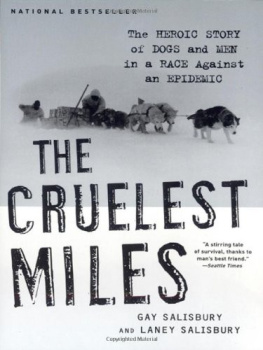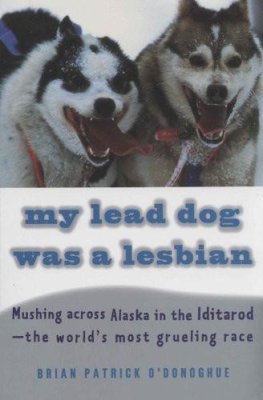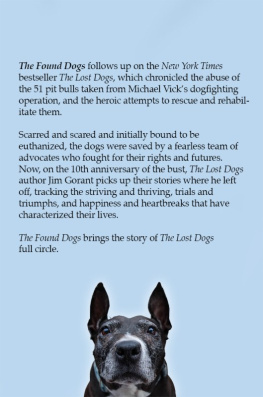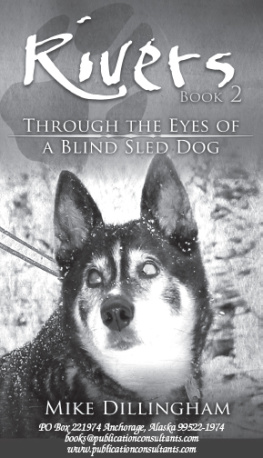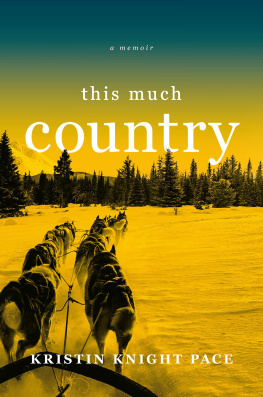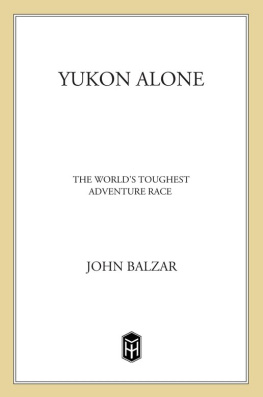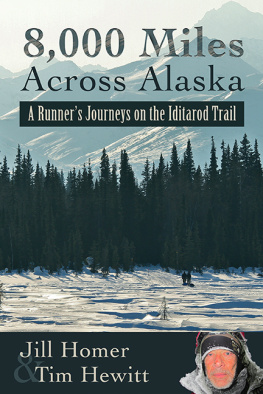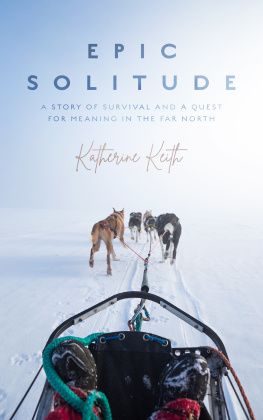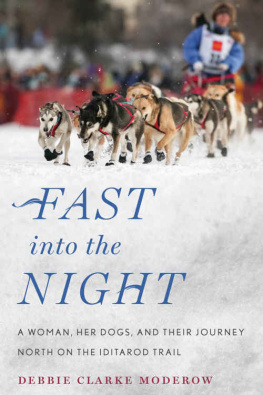W. W. Norton & Company
For information about permission to reproduce selections from this book, write to Permissions, W. W. Norton & Company, Inc.,
500 Fifth Avenue, New York, NY 10110
Salisbury, Gay.
The cruelest miles: the heroic story of dogs and men in a race against an epidemic / Gay Salisbury, Laney Salisbury.
p. cm.
Includes bibliographical references.
1. DiphtheriaAlaskaNome. 2. Sled dogs. I. Salisbury, Laney. II. Title.
W. W. Norton & Company, Inc.
500 Fifth Avenue, New York, NY 10110
www.wwnorton.com
W. W. Norton & Company Ltd.
Castle House, 75/76 Wells Street, London WIT3QT
Acknowledgments
This book would not have been possible without the resources, support, and hospitality of many people and institutions across the United States during the three years we spent researching and writing. At the University of Alaska, Fairbanks, we are particularly grateful to Professor Terrence Cole of the history department. We also thank Syun-Ichi Akasofu, director of the International Arctic Research Center; Julia Triplehorn, librarian of the Keith B. Mather Library at the Geophysical Institute; and library assistant Ann Wood. We are also indebted to the dedicated staff at the universitys Elmer E. Rasmuson Library: Robyn Russell, Dr. William Schneider, Dr. Susan Grigg, Caroline Atuk, Peggy Asbury, Richard Veazey, Rose Speranza, and Dirk Tordoff.
Ted Fathauer, lead forecaster of the National Weather Service in Fairbanks; four-time Iditarod champion Susan Butcher; sea-ice expert Dr. William Stringer; and Dermot Cole, reporter for the Fairbanks Daily News-Miner , were all generous with their time and help. To the ever-patient Campbell family in Tanana, thank you for the firsthand experience driving dogs in bush Alaska; and thanks to Dan ONeill and Sarah Campbell for recounting their trip by dog team over the entire serum run trail.
We found a warm welcome wherever we traveled in Alaska. We would especially like to thank Richard K. Nelson for his inspiration; Diane Brenner and Kathleen Hertel of the Anchorage Museum of History and Art; Igor Kripnick of the Arctic Studies Center; Penny Rennick of the Alaska Geographic Society; Judy Skagerberg at the Alaska State Archives; Bea Shephard of the Methodist Church Archives; Anne Laura Wood of the Alaska State Library; Mike Zaidlic and Donna Redding at the Bureau of Land Management; Dr. Robert Fortuine of the University of Alaska, Anchorage; Bruce Merrell of the Loussac Library; Joanne Potts of the Iditarod Trail Committee, Inc.; and Benoni Nelson at the Knik Museum and Mushers Hall of Fame.
Descendants of both Leonhard Seppala and Gunnar Kaasen offered freely of their time and memories. We would like to thank the many relatives of Gunnar Kaasen in both America and Norway, especially Jack Strege, Janice Weiland, and Stein Kaasen. We also thank the late Sigrid Seppala-Hanks and Bill Hanks for their assistance.
Nome of 1925 could not have been brought to life without help from many longtime residents such as Ruthmarie McDowell, Vesta Polsen, and Jean-Summers Wolf. As all researchers into Nome find out sooner or later, the many members of the Walsh clan were both gracious and informative. Our guide and host in Nome, fourth-generation Nome resident Cussy Kauer, was indispensable. She helped us in so many ways, often from 5,000 miles away, that we could never adequately thank her. Her Nome Cemetery Project, which city councilman Stan Andersen pushed through, was particularly vital to our efforts to reconstruct the epidemic. Others in Nome who helped were Deborah L. Redburn, John Handeland, Laura Samuelson, Lana Harris, Leslie Simone, Branson Tungiyan, Jerry A. Steiger, and Wes Perkins.
Researching the story of the serum run we also accumulated debts in England, Canada, and across the Lower 48. Many experts enthusiastically shared their knowledge with us, including the entire staff of the Cleveland Museum of Natural History, particularly their Balto expert, curator Steve Misencik; Sarah Bartash at the Cleveland Metroparks Zoo; Kenneth A. Ungermann, who wrote the classic account of the serum run more than forty years ago; Ed Blechner, whose devotion and tireless efforts to honor Togos memory, upon finding his mount atop a refrigerator in a closet in Vermont, resulted in the dog heros return to Alaska; Bob and Pam Thomas of the International Siberian Husky Club; Susan Carroll of the Merck Archives; Blaine Maley and Sara Cedar Miller at the Central Park Conservancy; Jonathan Kuhn at the New York City Parks Department; Barbara Narendra at Yale Universitys Peabody Museum; Polly C. Darnell and Barbara Rathburn of the Shelburne Museum in Vermont; John Parascandola and Marjorie Ciarlanti of the National Archives in Washington, D.C.; Elsie Chadwick of the Siberian Husky Club in Toronto; Julie Muhlstein of the Everett Herald ; Jim Bowman of the Glenbow Archives in Calgary; Red Cross historian Jean Waldman; Herb Farmer at the USC Moving Image Archives; Gregory Malak of the Will Rogers Memorial Museum; and Ken Atherton, formerly of the UK Hydrographic Office. Others who were helpful include Julian Bud Lesser and Marjorie Fasman, the children of Sol Lesser; Jona Van Zyle; Dale and Nancy Wolff; Terris C. Howard; Matt Morgan; Lance McLean; and Wendy Fitzgerald.
The writing of a book is always a group effort, and we thank our many friends and family members who read draft after draft of the manuscript. In particular we thank our parents for their continued support, insight, home-cooked meals, and a refuge in the country for writing; we thank Ricky Fortunato, Dermot Cole, Terrence Cole, Dan ONeill, and Bob and Pam Thomas for their careful reading, and Aly Sujo for his fine-tuning. Our cousin Ned Salisbury provided brilliant art direction; Adrienne Salisbury helped with photo and film research; and Harry Zernike was a merciless photo editor. The wonderful staff at Norton were behind the book from the beginning, particularly our editor, Starling Lawrence, and assistant editor, Morgen Van Vorst, as well as Louise Brockett, Jeannie Luciano, Felice Mello, Elizabeth Riley, and Bill Rusin.
Above all we want to thank the woman who has been there from the start, whose enthusiasm and editorial insight never wavered no matter what the condition of the trail, and who guided us along every step of the way, our friend and agent Susan Rabiner.
Finally we honor the indomitable spirit of the dog drivers and sled dogs of Alaska who together carved a legend in the snow, and to the memory of all the dear dogs weve loved so well: Muffin, Major, Maoser, Magic, Piggy, Trixie, Jack, Lochy, Piper, Piper II, Cosmo, Frisbee, and Sasha.
He who gives time to the study of the history of Alaska, learns that the dog, next to man, has been the most important factor in its past and present development.
A LASKA J UDGE J AMES W ICKERSHAM, 1903
There was no line of retreat, no going back and covering the same ground twice.
F RIDTJOF N ANSEN on naming his expedition Fram to mean Forward
Well, all I know about dogs is not much, but when I was up in Alaskatheir whole existence tangles around dogsthe backbone of the arctic is a dogs backbone.
W ILL R OGERSS last column, recovered from the wreck of his fatal plane crash in Alaska, August 1935

